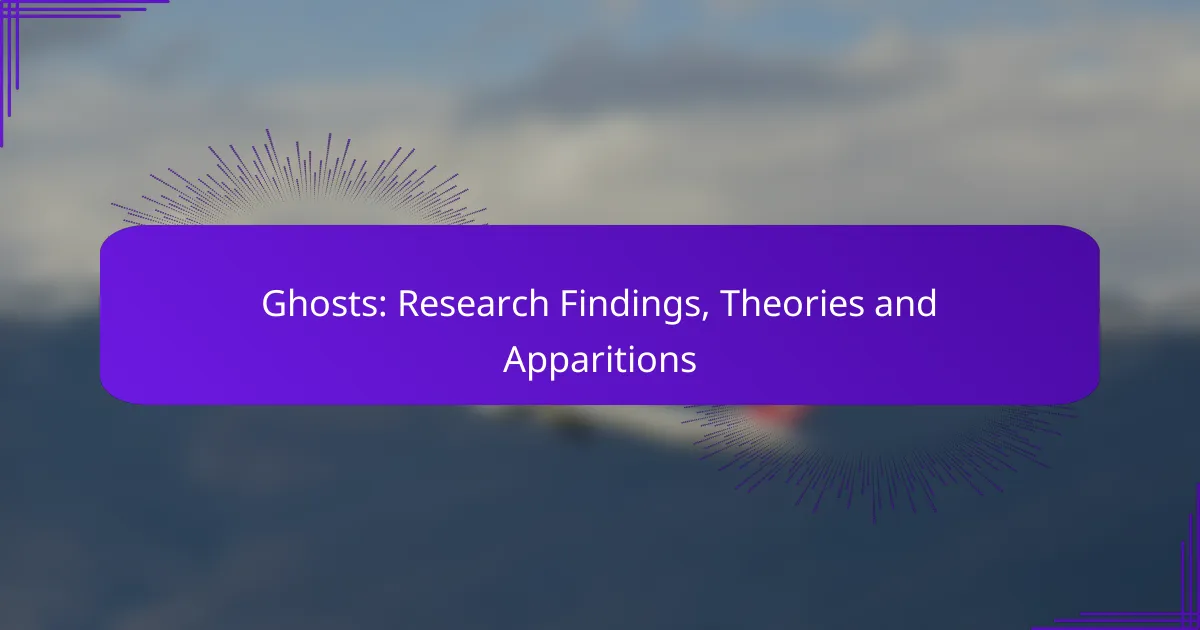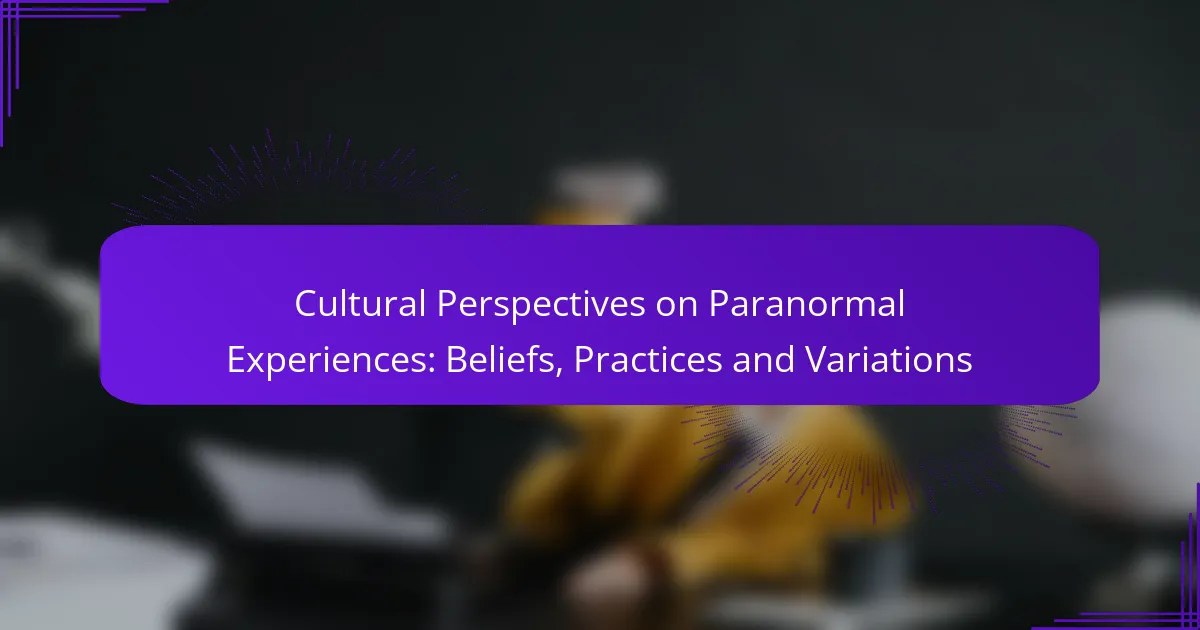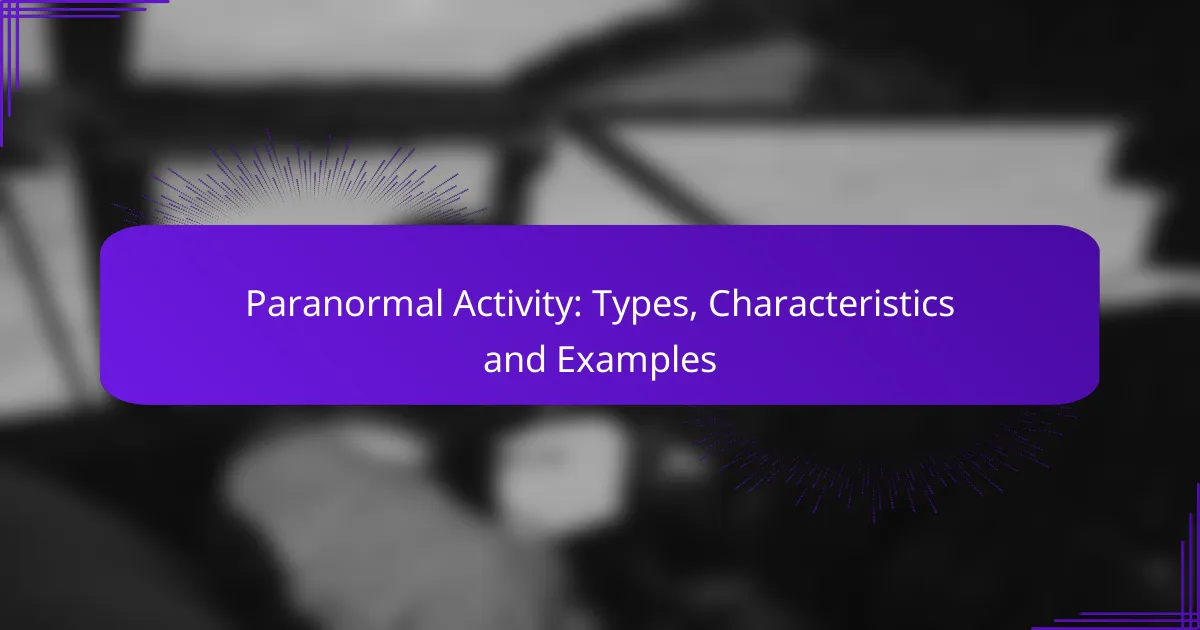The study of ghosts encompasses a variety of theories, including paranormal activity, psychological interpretations, and cultural contexts. Researchers employ diverse methods such as field investigations and surveys to gather data on reported sightings, enhancing our understanding of these mysterious phenomena. Notable haunted locations across the United States continue to intrigue both believers and skeptics alike, as they share their chilling encounters with the supernatural.
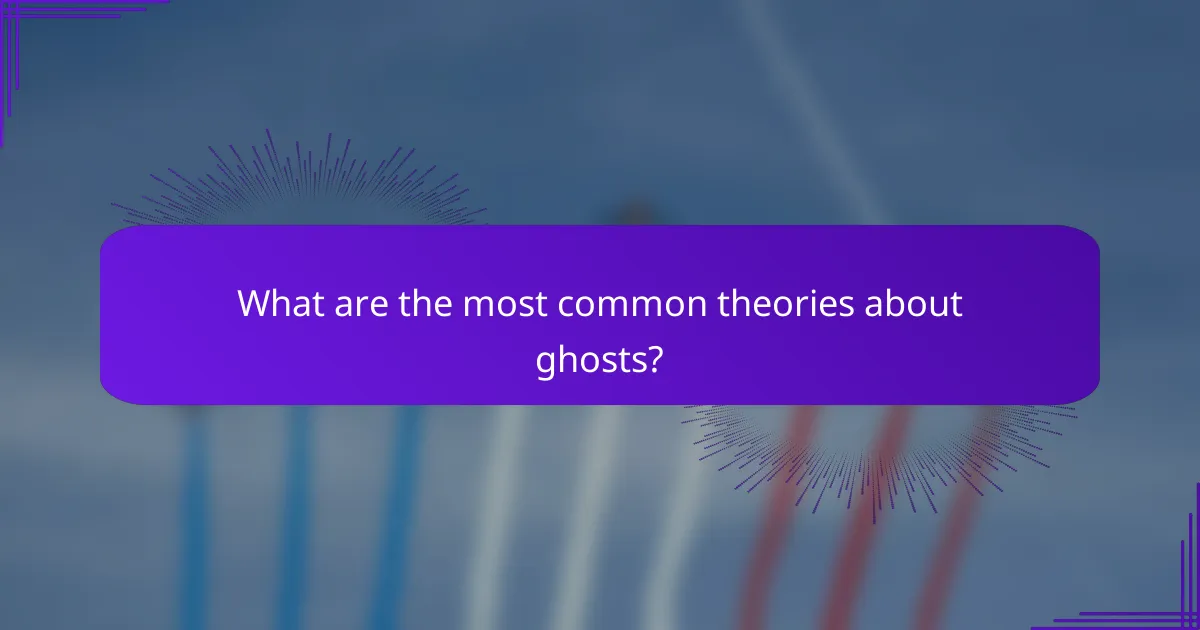
What are the most common theories about ghosts?
The most common theories about ghosts include paranormal activity, psychological explanations, cultural interpretations, quantum physics perspectives, and historical contexts. Each theory offers a different lens through which to understand ghostly phenomena and the experiences associated with them.
Paranormal Activity Theory
Paranormal activity theory posits that ghosts are manifestations of spirits or entities from another realm. This theory suggests that these entities can interact with the physical world, often resulting in unexplained noises, movements, or visual apparitions.
Proponents of this theory often rely on anecdotal evidence and personal experiences. Common methods for investigating paranormal activity include using electronic voice phenomena (EVP) devices, infrared cameras, and electromagnetic field (EMF) meters to detect unusual occurrences.
Psychological Explanations
Psychological explanations focus on the human mind’s role in perceiving ghosts. This theory suggests that experiences attributed to ghosts may stem from psychological factors such as stress, sleep deprivation, or hallucinations.
For instance, individuals in high-stress situations may misinterpret shadows or sounds as ghostly encounters. Understanding the psychological state of individuals reporting ghost sightings can provide insights into the nature of their experiences.
Cultural Interpretations
Cultural interpretations of ghosts vary widely across different societies and traditions. Many cultures have unique beliefs about the afterlife and spirits, influencing how ghosts are perceived and understood.
For example, in some cultures, ghosts are seen as benevolent protectors, while in others, they are viewed as malevolent entities. These cultural narratives shape people’s experiences and beliefs about ghostly phenomena.
Quantum Physics Perspectives
Quantum physics perspectives suggest that ghostly phenomena may be explained by principles of quantum mechanics, such as superposition and entanglement. This theory posits that consciousness and reality may not be as straightforward as they appear.
Some theorists argue that ghosts could be manifestations of energy or consciousness existing in a different state or dimension. While this perspective is speculative, it opens up discussions about the nature of reality and existence.
Historical Contexts
Historical contexts provide insight into how beliefs about ghosts have evolved over time. Many ghost stories are rooted in specific historical events or societal fears, reflecting the cultural climate of their time.
For instance, tales of haunted locations often correlate with tragic events, such as battles or disasters. Understanding the historical background of ghost stories can enhance comprehension of their significance and the emotions they evoke in contemporary society.

How do researchers study ghost phenomena?
Researchers study ghost phenomena through a combination of field investigations, surveys, interviews, and technological tools. These methods help to gather qualitative and quantitative data on reported sightings and experiences, allowing for a deeper understanding of ghost-related claims.
Field Investigations
Field investigations involve researchers visiting locations where ghost sightings have been reported. During these visits, they may conduct thorough examinations of the environment, looking for physical evidence or anomalies that could explain the phenomena.
Common practices include documenting the site with photographs, taking environmental readings (like temperature and electromagnetic fields), and interviewing witnesses on-site. This hands-on approach can provide immediate insights into the conditions surrounding reported ghostly encounters.
Surveys and Interviews
Surveys and interviews are essential for collecting personal accounts of ghost experiences from a broader audience. Researchers often design questionnaires that ask participants about their encounters, beliefs, and perceptions of ghosts.
These surveys can be distributed online or in person, allowing researchers to gather data from diverse demographics. Analyzing the responses helps identify patterns and common themes in ghost sightings, contributing to the overall understanding of public perception of the supernatural.
Technological Tools
Technological tools play a crucial role in the study of ghost phenomena, providing researchers with advanced methods to capture data. Equipment such as infrared cameras, digital voice recorders, and electromagnetic field meters are commonly used during investigations.
These tools help detect changes in the environment that may correlate with ghostly activity. For example, an increase in electromagnetic fields or unexplained temperature drops can be recorded and analyzed to support or refute claims of paranormal activity.
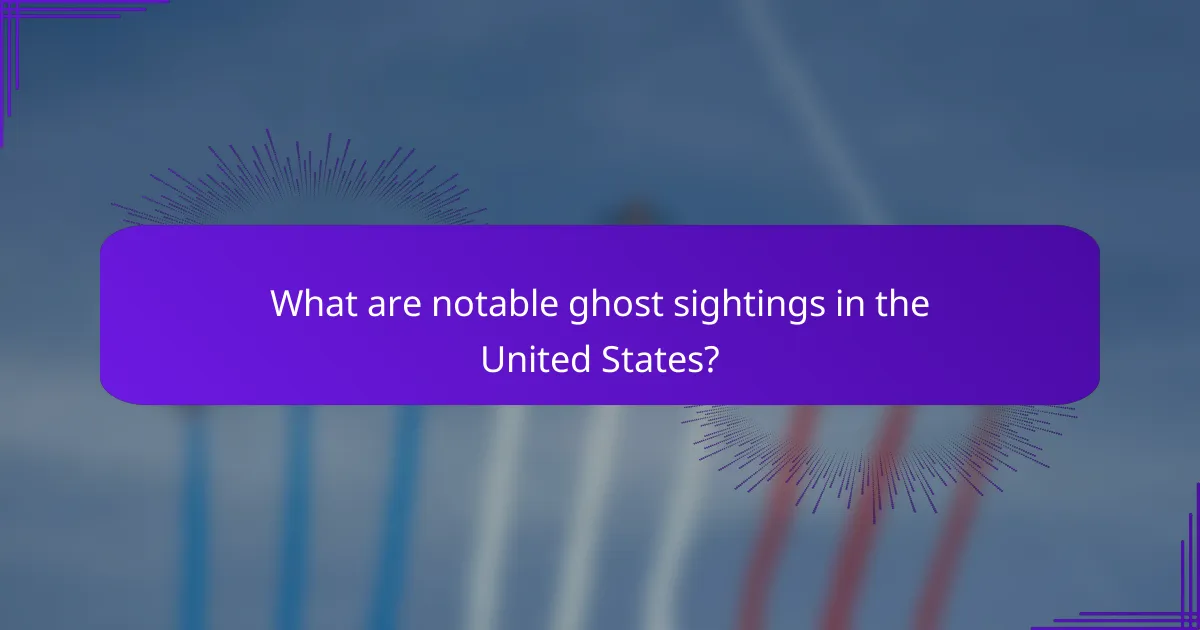
What are notable ghost sightings in the United States?
Notable ghost sightings in the United States include locations known for their haunted histories and reported paranormal activities. These sites attract both enthusiasts and skeptics, with many visitors sharing their eerie experiences.
Gettysburg Battlefield
The Gettysburg Battlefield is famous for its ghost sightings, attributed to the intense battles fought during the Civil War. Visitors often report seeing apparitions of soldiers, hearing cannon fire, and experiencing sudden drops in temperature.
Guided ghost tours are available, providing insights into the battlefield’s history and the stories behind the sightings. Many participants claim to have felt a strong presence, especially around key locations like Little Round Top and the Wheatfield.
Eastern State Penitentiary
Eastern State Penitentiary in Philadelphia is known for its haunting atmosphere and ghostly encounters. This former prison, operational from 1829 to 1971, has been the site of numerous paranormal investigations, with reports of disembodied voices and shadowy figures.
Visitors can explore the crumbling ruins and learn about the prison’s notorious inmates, enhancing the eerie experience. Nighttime tours often include stories of ghostly sightings, making it a popular destination for thrill-seekers and history buffs alike.
The Stanley Hotel
The Stanley Hotel in Estes Park, Colorado, gained fame as the inspiration for Stephen King’s “The Shining.” Guests frequently report ghostly encounters, including sightings of the hotel’s original owner, F.O. Stanley, and his wife, Flora.
Guests can participate in ghost tours that delve into the hotel’s haunted history and its paranormal activity. Many visitors describe feeling an inexplicable energy in certain rooms, particularly in the ballroom and the famous Room 217.
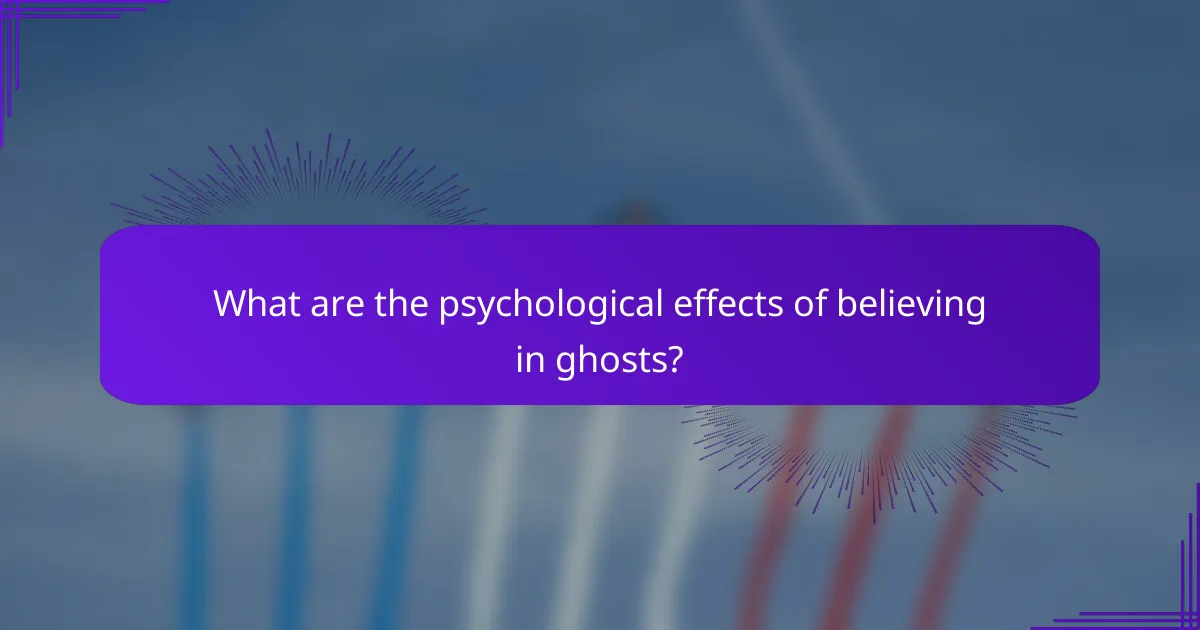
What are the psychological effects of believing in ghosts?
Believing in ghosts can significantly impact an individual’s mental state, often leading to heightened feelings of fear, anxiety, and even comfort. These psychological effects can shape personal experiences and influence social interactions.
Fear and Anxiety
The belief in ghosts can trigger intense fear and anxiety, particularly in individuals who are more susceptible to such feelings. This fear may stem from cultural narratives, personal experiences, or media portrayals that depict ghosts as malevolent entities.
People may experience heightened anxiety in situations perceived as haunted or during nighttime, leading to avoidance behaviors. This can affect daily life, causing disruptions in sleep patterns and social activities.
Coping Mechanisms
Individuals often develop coping mechanisms to manage their fear of ghosts. Common strategies include rationalizing experiences, seeking reassurance from others, or engaging in spiritual practices to feel more secure.
Some may turn to paranormal investigations or ghost tours as a way to confront their fears. These activities can provide a sense of control and community, allowing individuals to explore their beliefs in a structured environment.
Community and Identity
Belief in ghosts can foster a sense of community among like-minded individuals. Groups often form around shared experiences, leading to support networks where members can discuss their beliefs and fears openly.
This shared belief can also shape personal identity, as individuals may identify strongly with paranormal communities. Participation in these groups can enhance social connections and provide a sense of belonging, reinforcing their beliefs and experiences.
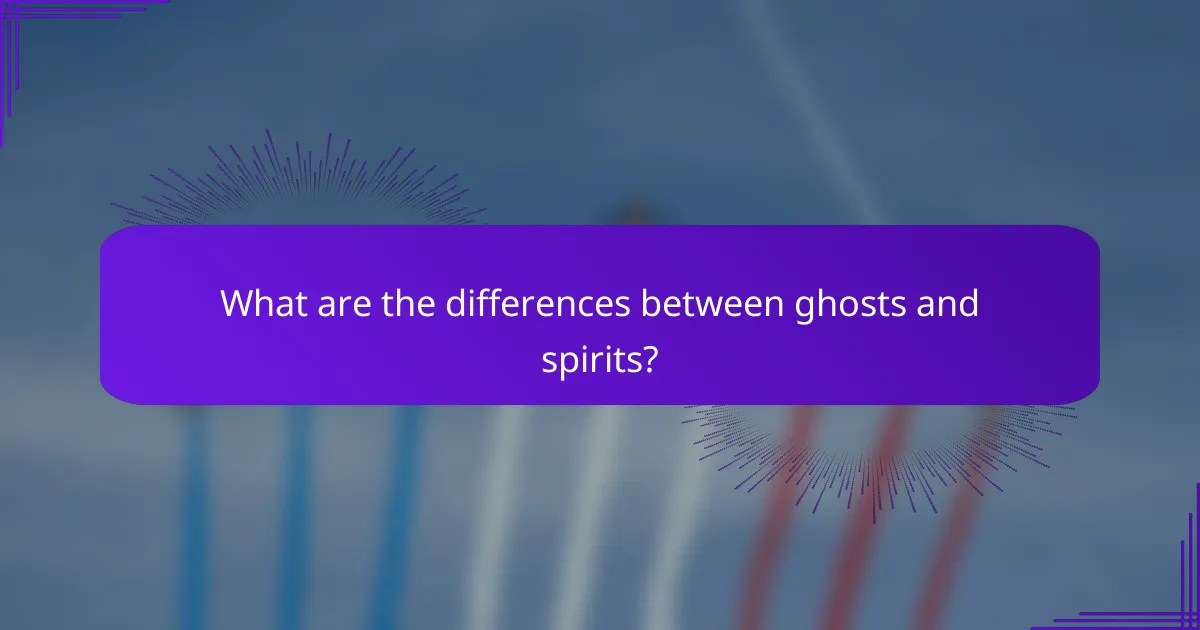
What are the differences between ghosts and spirits?
Ghosts are often considered the souls of deceased individuals who have not moved on, while spirits can refer to a broader range of supernatural entities, including benevolent or malevolent forces. The distinction lies in the context and beliefs surrounding their existence and interactions with the living.
Definitions and Contexts
Ghosts are typically defined as the lingering presence of a person who has died, often associated with specific locations or events. They are commonly depicted as apparitions that can manifest visually or audibly, creating a sense of connection to the past.
Spirits, on the other hand, can encompass a variety of non-physical entities, including nature spirits, angels, and demons. The term “spirit” is often used in religious or spiritual contexts to describe beings that may not have a direct connection to human death.
Beliefs Across Cultures
Different cultures have unique interpretations of ghosts and spirits. For example, in many Western traditions, ghosts are seen as lost souls, while in Eastern cultures, such as in Japan, spirits may be revered as ancestral guardians. These beliefs shape how communities interact with the supernatural.
In some Indigenous cultures, spirits are considered integral to the natural world, embodying elements like wind, water, and earth. This perspective emphasizes a harmonious relationship with the spirit realm, contrasting with the often fearful view of ghosts in other societies.
Scientific Perspectives
From a scientific standpoint, ghosts and spirits are often viewed skeptically, with many researchers attributing sightings and experiences to psychological phenomena, environmental factors, or cultural conditioning. Studies have shown that low-frequency sounds and electromagnetic fields can influence perceptions of ghostly encounters.
While there is no empirical evidence supporting the existence of ghosts or spirits, the psychological impact of belief in these entities can be significant. Understanding these perspectives can help individuals navigate their experiences and beliefs regarding the supernatural.

What are the implications of ghost research for society?
Ghost research raises important questions about belief systems, mental health, and societal norms. Understanding these implications can help address fears and promote a more informed dialogue about the supernatural.
Impact on Mental Health
The exploration of ghosts and paranormal phenomena can significantly affect mental health, both positively and negatively. For some individuals, engaging with ghost research can provide comfort and a sense of connection to lost loved ones, potentially aiding in the grieving process.
Conversely, a strong belief in ghosts may lead to anxiety or fear, particularly in vulnerable populations. It is crucial to approach ghost-related discussions with sensitivity, ensuring that individuals feel supported rather than dismissed.
To mitigate negative impacts, mental health professionals can incorporate discussions about beliefs in the supernatural during therapy. Encouraging open dialogue about fears and experiences can help individuals process their feelings and reduce anxiety related to ghostly encounters.
